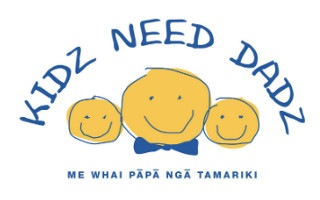The Killer Within
The government attempts to tackle New Zealand’s high suicide rates with an “all ages” strategy, brushing aside an age or gender approach. Mark Stephenson examines the Suicide Prevention Strategy 2006-2016 and questions the non-gender approach when suicide rates for males are so much higher than for females.
Five hundred people kill themselves each year in Godzone. That’s one person out of every eight thousand of us living in New Zealand. Five times that number harm themselves badly enough to be admitted to hospital, but survive. That’s one person in sixteen hundred.
This is an issue that is likely to affect us all at some stage in our lives. Partners, close and extended family, friends and the whole community experience sadness and grief following such events. The sense of loss pervades our whole society, particularly when young people decide their lives are no longer worth living.
Naturally, people ask themselves why?
And what can we do to prevent such tragedy?
More people commit suicide than are killed on our roads each year. Suicide rates are high in New Zealand and affects young adults disproportionately. It is the second commonest cause of death in people aged 15-24. Internationally, our suicide rate for men aged 15-24 is second only to Finland.
The Ministry of Health has produced a ‘Suicide Prevention Strategy 2006-2016’
The information presented here is largely taken from the Strategy, and Ministry of Health data on suicide from 2003. The Strategy is an attempt to make sense of the problem and to outline an approach to improve society’s response to people in mental distress and improve care. The goals stop short of a specific reduction in suicide numbers, however.
The Hon Jim Anderton launched the document on 29/6/06. ‘The Strategy sets out seven goals and includes gender as a specific population group affected by suicide’ – this from Monique Leerschool of the Ministry of Youth Development. She went on to say that ‘how these goal will be achieved… will be described in two action plans.’ The first of these will go before cabinet in early 2007.
It would be helpful to know what sort of people are likely to take their own lives and why. This is very complex, as you would expect, but some factors can be identified that show what is happening. Such knowledge will not help any individual cases but may help with planning services to reduce the problem.
Suicide rates have increased over the last fifty years.
Youth suicide has increased dramatically and peaked in the mid to late nineties.
Men and boys kill themselves over three times more frequently than women and girls. At all ages, the male suicide rate is much higher. However the rate of suicidal attempts without death is higher amongst females.
According to Maria Cotter, Team Leader in Public Health at the Ministry of Health, ‘gender issues are relevant and important’ in suicide prevention. However, the MOH prefers to think of it as an issue affecting both sexes, but that males are more likely to use more violent methods – firearms, hanging, etc., than women.
They do not think that males are different in their ‘tendencies to suicidal behaviours’.
The Suicide Prevention Strategy also mentions, but dismisses, the issue of ‘cultural acceptability of male suicide’. This parallels society’s acceptance that men risk their lives in wartime service and perform most of the dangerous jobs (firefighters, miners, builders etc).
Other gender issues similarly dismissed are: the protective role of children for females and male reluctance to seek help. The document states the ‘arguments linking gender with suicidality may be without foundation’ (my emphasis).
They say suicidal behaviours in general (i.e.- attempted and completed suicide) is an issue for both genders: women make more attempts but males more often die. Female suicide rates are significant and may in fact have increased in the early years of this decade. The female suicide rate is high compared to other OECD countries.
Youth suicide is high in New Zealand but high rates occur in age groups well into middle age, particularly for men. There are particularly high rates for older men too. Another group that is over-represented is Maori, mainly Maori men. The Ministry of Health identifies this group as needing a different approach and measures appropriate to the culture.
Many factors contribute to suicide in any individual case. However, it has been suggested that up to 70% of suicides can be attributed to mental disorders. These may include depression, psychosis (e.g., schizophrenia), drug and alcohol abuse, and antisocial disorders such as problems with conduct or violence.
The seven goals of the Suicide Strategy are to:
Promote mental health and prevent mental health problems
Improve care for people with disorders associated with suicide
Improve care for those who attempt suicide (10% will go on to succeed)
Reduce access to means of suicide
Promote safe portrayal and reporting of suicide by the press
Support families/whanau and friends affected by suicidal behaviours
Expand the evidence about rates, causes and effective interventions.
In response to the question whether promoting positive images of young men would be helpful, Maria Cotter at the Ministry of Health said that Goal 1 focuses on mental health promotion, and future approaches ‘may include positive role models’.
Government has increased spending in mental health by 75% since 2000. Mental health nurses have increased by 27% and psychiatrists by 16%. She said that services are ‘improving and more people are gaining access to services.’
This is good news if the trend continues as Mental Health Services have been poorly funded for some decades. Greater availability of services and support for depressed people, particularly the less well off, could be a step in the right direction, though whether it is cost effective is probably unknown.
In view of the gender differences in the statistics, should services be aimed primarily at men? Maria Cotter said the Ministry was ‘unlikely to establish new services solely for males’, though they did expect providers to ‘deliver services appropriate to the user, taking into account age, ethnicity and gender’.
The Ministry of Health is responsible for New Zealand’s suicide prevention and has an all-age, all-gender approach embedded in its strategy. It will take at least a decade to see what effect it has.
Society continues to change, and suicide trends may change too. Let us hope the changes in attitude and delivery of services for mental health impact in a positive way on the numbers of people who feel suicidal. whoever they are.
Under The Lid?
Government policy puts strict regulations on what the media can and can’t report about suicide and what can and can’t be talked about in schools. Peter Walker thinks that the current regime of silence is costing lives.
Eleven people are sitting in a circle. They know each other intimately. They have shared their darkest secrets with the group, and these broken people trust each other. They are borderline.
Depressed. Bi-polar. Schizophrenic. The facilitator holds this group together with two things – her own experiences, and her integrity. The group trusts her, sometimes with their lives.
Today, the facilitator faces a difficult decision. One person is missing from the support group. Three days earlier, that person killed himself. The others miss him, but they do not know why he is not there. The facilitator must either lie to them, possibly causing them stress, or tell them the truth, breaking the rules, which dictate they cannot talk about suicide.
There is a debate going on in New Zealand. In March, former Race Relations Conciliator and Founding Chairman of the Youth Suicide Awareness Trust, Gregory Fortuin referred to a “regime of silence” surrounding the vexing issue of suicide. Associate Minister of Health, Jim Anderton, denied any such “regime” exists.
“Talking about suicide” can take many forms. Internationally, there are specific guidelines set down by Governments as to how mainstream media should report on suicide. The New Zealand Ministry of Health (MOH) proscribes “glorifying suicide”, reporting “how-to descriptions”, presenting suicide as a solution to problems, and printing where and how details..
There is an immense body of knowledge about the causes of suicide, and how the media may impact suicide numbers has been the topic of significant discussion. An Australian study reported an increased number of suicides following certain portrayals of suicide in the media, primarily television. The mainstream media generally take a cautious stance.
Suicide is a popular subject on the Internet and attempts have been made by Government departments to shut down some web sites, or to order some content withdrawn.
Non-Government Organisations (NGO’s) have also been the target of Government sanctions on discussing suicide. While Yellow Ribbon, a school-based peer support programme, was not specifically named, schools were warned by the Ministries of Health, Education, and Youth Affairs not to participate in such programmes.
This when the youth suicide rate was near it’s highest.
The controversy surrounding school-based awareness programmes appears to rest largely on the evaluation of such initiatives. Annette Beautrais, of the Canterbury Suicide Project, writes:
“While a recent review of school-based programmes found increased knowledge about suicide, improved attitudes about depression and suicide, and lower suicide attempt rates in the intervention compared to the control group in the three months after intervention, the evaluation failed to find increased rates of help-seeking or suicidal ideation in students exposed to the programmes,” (Australian eJournal for the Advancement of Mental Health, V. 5, Issue 1, 2006).
Neither did the review report an increased number of suicides because of exposure to such programmes.
In a 2002 MOH pamphlet, Maria Cotter suggested “some evidence shows that they (school-based suicide awareness programmes) actually increase the risk of suicide amongst those who are already vulnerable”.
A former Yellow Ribbon ambassador, however, praised the programme and is adamant about its’ benefits.
Another example of censorship occurred when Craccum (University of Auckland student newspaper) editors/writers were heavily censured when they published two articles about suicide deemed to have breached accepted guidelines.
In October, 2005, Suicide Prevention Information New Zealand (SPINZ), part of the Mental Health Foundation of New Zealand, held the “Males and Suicide: Pathways Forward” Symposium, to discuss the disproportionate rate of male suicide. Some, however, criticized SPINZ, saying their claims were “misleading”, and therefore, according to a news report, “did not take up the opportunity to present or participate in the symposium.”
In June the MOH published the New Zealand Suicide Prevention Strategy 2006-2016.
It’s seven goals intend to “provide a clear direction for suicide prevention efforts over the next ten years.” However, “how these goals will be achieved, by when and by whom, will be described in the action plans that will accompany the strategy.” There is no indication in the document when the first action plan will be announced.
If the NZSPS provides “clear direction” for suicide prevention efforts, it is surprising that Annette Beautrais recently wrote that “we know relatively little about what is most effective in preventing suicide,” (AeJAMH).
Still, the Government and it’s experts maintain a “we know better” attitude. Since 1986, well over 400 Kiwi’s have killed themselves each year. Two decades of “suicide prevention” has not lowered the numbers.
There is little support among the experts for “public awareness campaigns” about suicide. Recent awareness campaigns, however, have been moderately successful in lowering the road death toll, helping smokers to quit, and de-stigmatising mental illness.
Public education is essential to reducing the suicide rate and the experts are being too cautious. The Journal of the American Medical Association, 26 October, 2005, states “the effectiveness of public awareness and education campaigns in reducing suicidal behaviours has seldom been systematically evaluated.” Therefore, it could be argued that such a campaign may help reduce the suicide rate.
Common sense says that talking about suicide, and encouraging help-seeking behaviours, will have a positive effect. The MOH web site states that “allowing people to speak openly about suicide will likely reduce the risk of suicide rather than give them the idea to try it.”
Many “front-line” people think more open discussion of suicide will be beneficial. They do not want to sensationalise or glorify suicide. They want to be able to discuss suicide frankly. “Absolutely,” says Gill, a mental health worker. “You can flatten all the buildings, get rid of all the cutlery, shut down all of the hardware stores, but they will always find a way.
A small percentage, determined to take their lives. They don’t talk about it. They just do it. But that’s only a very small percentage. The rest want to talk about it. Desperately want to talk about it”.
The mainstream media can be a powerful tool. It could be used to encourage some people to seek help when things are getting on top of them. Perhaps not all will avail themselves of the help, and certainly the Government needs to resource service agencies better. But it may be that some suicidal people will seek help instead of taking their own lives.
World Suicide Prevention Day (September 10) passed almost without mention in New Zealand. The IASP (International Association for Suicide Prevention) and WHO (the World Health Organisation) suggested a number of initiatives to mark the day – conferences, newspaper articles, TV and radio interviews, public lectures, memorial services, concerts or candle-lit ceremonies.
Next: What Else Is There?




